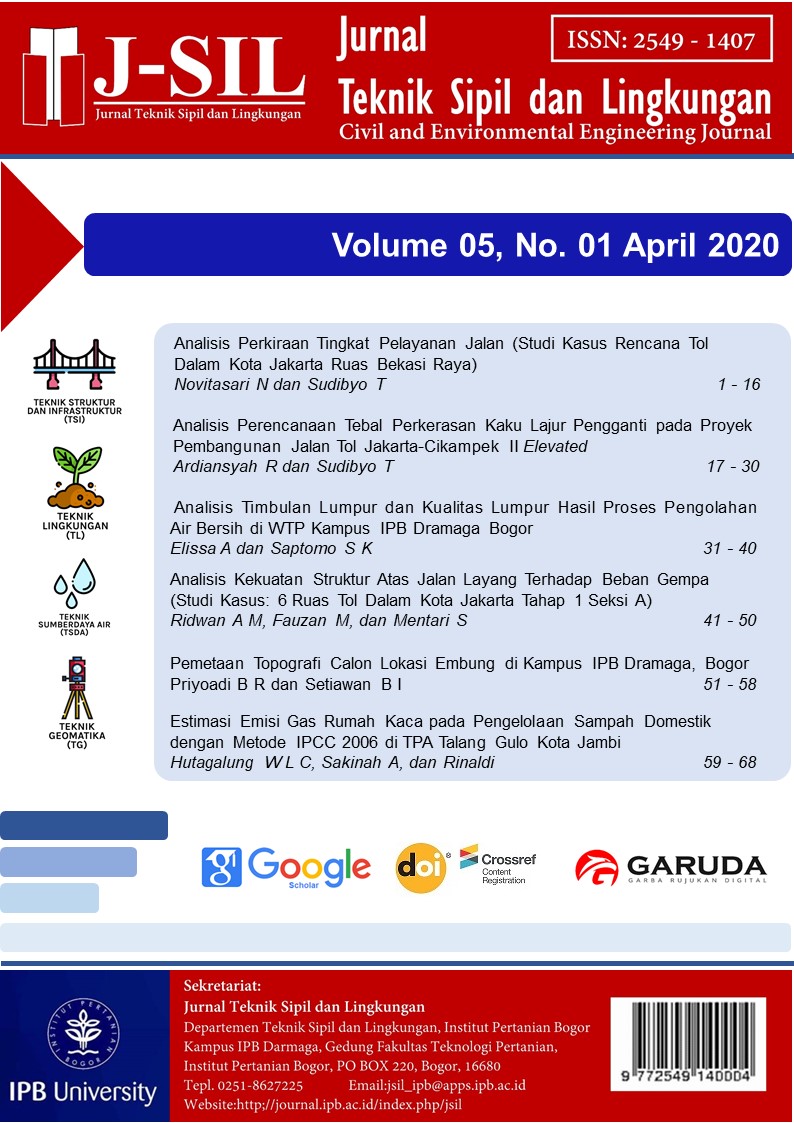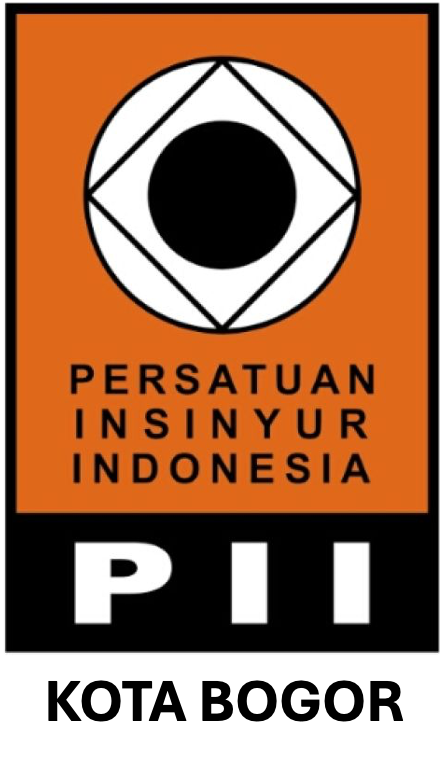Analisis Kekuatan Struktur Atas Jalan Layang terhadap Beban Gempa (Studi Kasus: 6 Ruas Tol Dalam Kota Jakarta Tahap 1 Seksi A)
Abstract
The high potential earthquake in Indonesia made the earthquake an important factor in the planning of a building. The study aims to do the way of modeling, analyzing the inner style, displacement occurring in the current earthquake structure and knowing the vibration period and the stiffness of the structure. Research conducted in Kelapa Gading North Jakarta. Research using secondary data obtained from KSO Jaya Konstruksi-Adhikarya by using CSI Bridge. The flyover modeling is based on secondary data. The results show that 12 vibration modes may occur in the flyover structure. The largest period occurred in mode 1 that was equal to 0.84 sec which represented the behavior of the structure so that the total stiffness value of the structure was 275512.95 kN/m. Structures can be categorized as a flexible structure. Displacement is the structure of 92.5 mm and is still below the value of allowable displacement so it could be classified as the safe category. The force that occurs in the structure of the axial force, shear force, torsion, and flexure moment.
Keywords: CSI Bridge, displacement, earthquake, flyover, force.
Downloads
References
Anggen WS, Budi AS, Gunawan P. 2014. Evaluasi Kinerja Struktur Gedung Beritngkat Dengan Analisis Dinamik Time History Menggunakan Etabs (Studi Kasus: Hotel Di Daerah Karanganyar). E-Journal Matriks Teknik Sipil. 3(1): 313-320.
[BSN] Badan Standardisasi Nasional. 2012. Perencanaan Ketahanan Gempa. SNI 03-1726-2012. Jakarta (ID): BSN.
[BSN] Badan Standardisasi Nasional. 2016. Pembebanan untuk Jembatan. SNI 1725:2016. Jakarta (ID): BSN.
Deshariyanto D. 2015. Perbandingan Gaya Dalam Metode Manual Dan Program. Jurnal Media Informasi Teknik Sipil UNIJA. Vol 3(1): 39-44.
Hutapea BM, Mangape I. 2009. Analisis Hazard Gempa dan Usulan Ground Motion pada Batuan Dasar untuk Kota Jakarta. Jurnal Teknik Sipil. 16(3):121- 131.
Indra AV, Suryanita R, Ismeddiyanto. 2016. Analisis Respons Dinamik Jembatan Rangka Baja Menggunakan Sistem Seismic Isolation Lead Rubber Bearing (LRB). Jom FTEKNIK. 3(1): 1-12.
Irsyam M. 2005. Pengantar Rekayasa Gempa. Bandung (ID):
Institut Teknologi Bandung.
Kristin NV, Wibowo A, Setyowulan D, Wahyuni ES. 2018. Pengaruh Gempa Terhadap Perilaku Jembatan Cable Stayed Tengku Fisabililah Riau Dengan Time History Analysis. Rekayasa Sipil. Vol 12(2): 142-148.
Meidiansyah AF, Purwanto MPJ, Fauzan M. 2016. Analisis Struktur Box Girder Jembatan Fly Over Rawa Buaya Sisi Barat Terhadap Gempa (Structure Analysis Of Box Girder The Western Rawabuaya Flyover Bridge On Earthquake Load). Jurnal Teknik Sipil Dan Lingkungan. 1(1): 11-18.
Nur AM. 2010. Gempa Bumi, Tsunami, dan Mitigasinya. Jurnal
Geografi. 7(2): 66-73.
Roring Y, Sumajouw MDJ, Dapas SO. 2016. Respon Dinamis Struktur Bangunan Beton Bertulang Bertingkat Banyak Dengan Kolom Berbentuk Pipih. Jurnal Sipil Statik.Vol 4(10): 649-655.
Sanjaya SSR. 2014. Perencanaan Struktur Gedung Asrama Mahasiswa Universitas Sriwijaya Palembang dengan Penahan Lateral Kombinasi Sistem Rangka 34 Pemikul Momen dan Dinding Struktural. Jurnal Teknik Sipil dan Lingkungan 2:139-145.
Sukanta IN, Prakoso WA. 2010. Analisis Pengaruh Variabilitas Tanah Pada Variabilitas Spektrum Respon Gempabumi. Jurnal Meteorologi dan Geofisika. 11(2): 154-162.
Tavio, Wijaya U. 2018. Desain Rekayasa Gempa Berbasis Kinerja. Yogyakarta (ID): Andi Offset.
Wulandari S. 2013. Analisis Dan Evaluasi Struktur Atas Tower C Grand Center Point Apartement Terhadap Beban Gempa Berdasarkan Peta Gempa Indonesia 2010 [Skripsi]. Bogor (ID): Institut Pertanian Bogor.
Authors who publish with Jurnal Teknik Sipil dan Lingkungan, JSIL agree to the following terms:
a. Authors retain copyright and grant the journal right of first publication with the work simultaneously licensed under a Creative Commons Attribution License that allows others to share the work with an acknowledgment of the work's authorship and initial publication in this journal.
b. Authors are able to enter into separate, additional contractual arrangements for the non-exclusive distribution of the journal's published version of the work (e.g., post it to an institutional repository or publish it in a book), with an acknowledgment of its initial publication in this journal.
c. Authors are permitted and encouraged to post their work online (e.g., in institutional repositories or on their website) prior to and during the submission process, as it can lead to productive exchanges, as well as earlier and greater citation of published work (See The Effect of Open Access).











